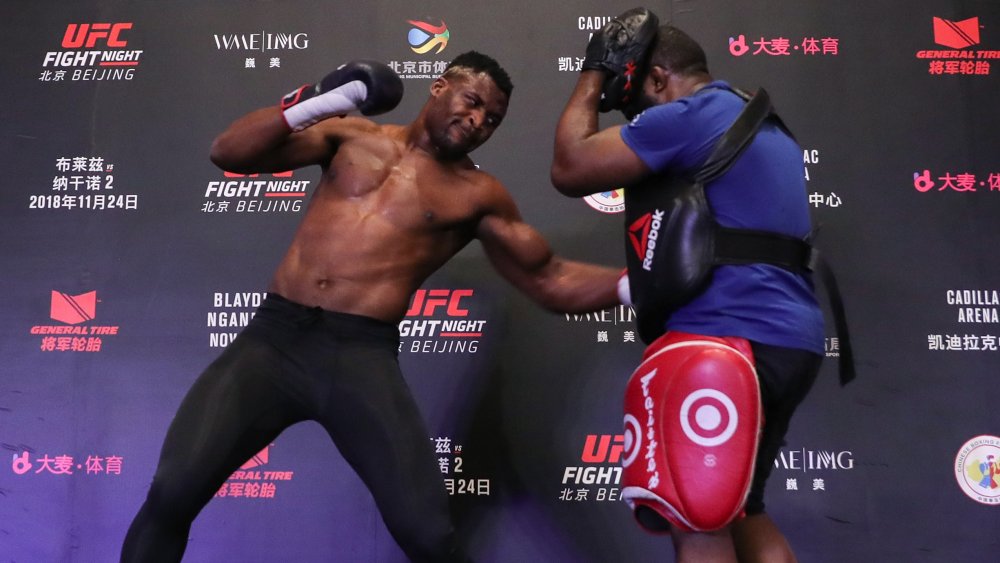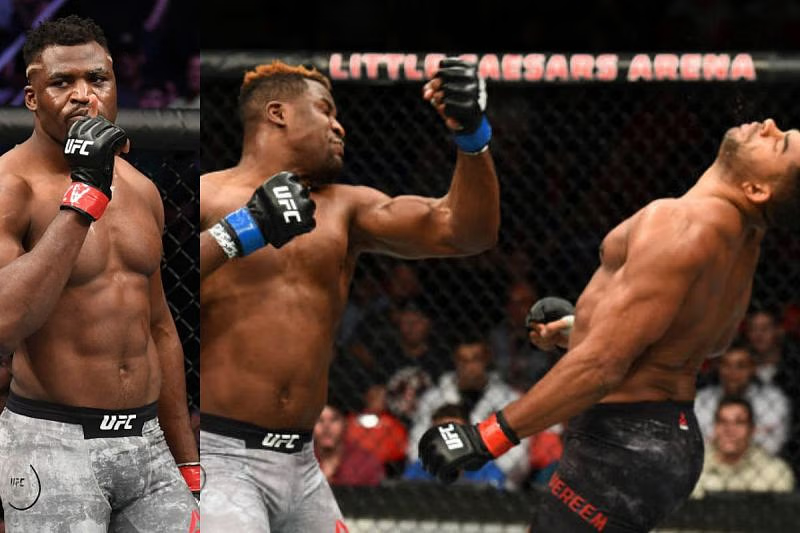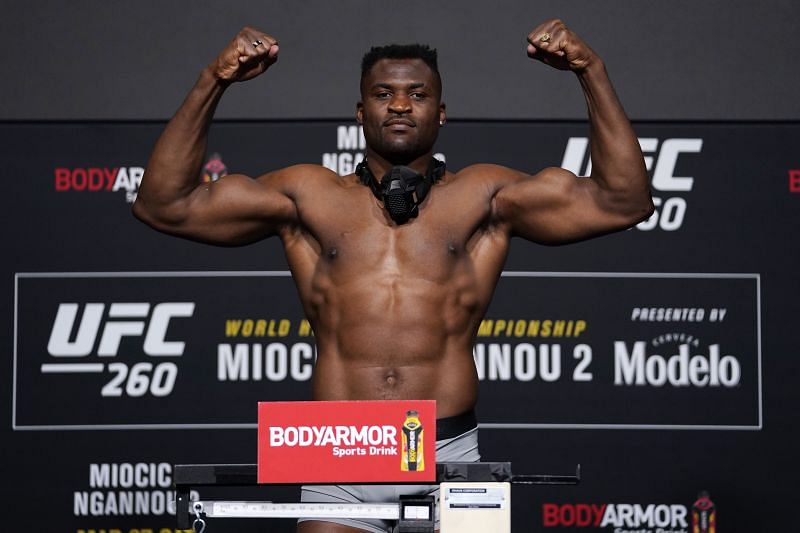Who Has The Strongest Punch Ever Recorded? Unpacking The Science And Legends
Detail Author:
- Name : Dr. Noble Krajcik
- Username : skylar08
- Email : ipacocha@conn.com
- Birthdate : 2004-09-22
- Address : 527 Stoltenberg Views Apt. 275 West Bridget, TN 93868-8557
- Phone : +1 (559) 509-2333
- Company : O'Hara-Hills
- Job : Electrolytic Plating Machine Operator
- Bio : Quia eum ipsum vitae et reiciendis aut est. Nostrum provident ut dolores magni eos in. Et error quod sit quia magnam. Harum et modi unde soluta natus assumenda.
Socials
instagram:
- url : https://instagram.com/khowe
- username : khowe
- bio : Dicta accusantium ducimus neque. Et perferendis ut et. Neque iste qui iure ipsam molestiae sint.
- followers : 2178
- following : 2064
facebook:
- url : https://facebook.com/katlyn_howe
- username : katlyn_howe
- bio : Quis reprehenderit voluptas perferendis quas inventore nam.
- followers : 4209
- following : 1400
Thinking about the sheer force a human can generate with a single strike is, you know, pretty captivating. It's a question that sparks curiosity, really, whether you're a sports enthusiast, a martial arts practitioner, or just someone who enjoys a good physical feat. For ages, people have wondered about the ultimate punch, the one that delivers incredible impact.
This quest to find out who has the strongest punch ever recorded is, in some respects, more complex than it might seem at first glance. It's not just about raw muscle, you see. There are so many things that come into play, like how fast someone moves, the way their body works together, and even the method used to measure the punch itself. So, it's quite a puzzle to put together.
Today, with all the advancements in technology, we get a slightly better look at these powerful strikes, yet it's still a challenge to compare different athletes across different sports and eras. We'll explore what makes a punch truly powerful, look at some of the names often mentioned in discussions about incredible striking ability, and talk about how we even try to measure such a thing, as a matter of fact.
Table of Contents
- The Elusive Quest: Defining "Strongest Punch"
- Science Behind the Strike: What Makes a Punch Powerful?
- Legends of the Fist: Notable Contenders
- How is Punch Force Measured?
- FAQs About Punching Power
- The Ongoing Search for the Ultimate Strike
The Elusive Quest: Defining "Strongest Punch"
Trying to pinpoint who has the strongest punch ever recorded is, you know, a bit like trying to catch smoke. It's a fascinating idea, but the definition itself can be quite slippery. What does "strongest" even mean in this context? Is it the raw force generated, the speed of the strike, or the destructive effect it has on a target? Each of these aspects plays a part, and sometimes, they don't all align perfectly, so it's a bit complicated.
What Exactly Are We Measuring?
When people talk about a punch's strength, they might be thinking about different things, actually. Some might mean the peak force, which is usually measured in pounds of force (lbf) or Newtons (N). This is the sheer push or pull at the moment of impact. Others might consider the power, which combines force with speed, often expressed in Watts. Power is, arguably, a better indicator of how much work a punch can do. Then there's impact energy, measured in Joules, which considers the mass of the object and its speed. This is, in some respects, what truly transfers to the target. So, depending on what you're looking for, the "strongest" could mean different things.
For example, a slow, heavy push might generate a lot of force, but a quick, snappy strike, even with less peak force, might deliver more damaging power. It's a bit like comparing a slow-moving train to a speeding bullet, you know? Both have their own kind of impact, but in very different ways. The challenge is, there isn't one universal standard for measuring "the strongest," which makes direct comparisons quite difficult, as a matter of fact.
The Challenge of Real-World Data
Getting accurate measurements of punch force in real-world situations, like during a boxing match or an MMA fight, is virtually impossible. The conditions are just too variable. Fighters are moving, the target (another person) is also moving and reacting, and the impact point changes with every strike. So, any numbers you hear from actual fights are more or less estimates or based on anecdotal evidence, which isn't always reliable, you see. Lab settings, on the other hand, allow for controlled measurements, but they don't always perfectly reflect the dynamic nature of a real fight. This is why the discussion around "who has the strongest punch ever recorded" often relies on a mix of scientific tests and legendary tales, quite frankly.
Science Behind the Strike: What Makes a Punch Powerful?
A truly powerful punch isn't just about big muscles, though those certainly help, obviously. It's a sophisticated display of physics and biomechanics, a coordinated effort from the entire body. It's actually a fascinating thing to break down, like how a complex machine works, you know. Every part has to do its job just right for the whole system to deliver maximum impact. So, understanding these elements helps us appreciate what goes into a truly devastating strike.
Kinetic Chain and Body Mechanics
The secret to a powerful punch lies in what's called the "kinetic chain." This refers to the sequence of movements from your feet all the way through your fist. It starts with grounding yourself, pushing off the floor with your legs, and then rotating your hips and torso. This rotation is incredibly important because it transfers momentum from your larger, stronger lower body muscles into your upper body. Your core muscles, you know, play a very, very vital role in this transfer, acting like a bridge. Finally, your shoulder, arm, and fist snap into action, delivering the accumulated force. If any part of this chain breaks down or isn't timed correctly, the punch loses a lot of its potential. It's like a domino effect, where each piece has to fall just right, as a matter of fact.
Speed, Mass, and Impact
Physics tells us that kinetic energy, which is the energy of motion, is calculated using an object's mass and its speed squared (KE = 0.5 * mv²). This means that speed has a much greater impact on the energy delivered than mass does. Doubling your speed, for instance, quadruples the energy of your punch, whereas doubling your mass only doubles the energy. So, while a heavier person might naturally hit harder, a smaller person with incredible hand speed can still deliver a surprisingly powerful strike. This is, you know, why you see smaller fighters sometimes knock out much larger opponents. It's not always about brute force; it's often about that explosive quickness, quite honestly.
Training for Tremendous Force
To develop a truly powerful punch, training needs to focus on more than just arm strength. Athletes work on explosive power in their legs and hips, often through exercises like squats, deadlifts, and plyometrics. Core strength is also very, very important for transferring that energy effectively. Speed drills, like shadow boxing with light weights or using resistance bands, help improve the quickness of the strike. And, of course, proper technique is essential. You can have all the strength and speed in the world, but if your form is off, you won't be able to deliver that force efficiently. It's a combination of strength, speed, and precision, so it's a pretty demanding kind of training, actually.
Legends of the Fist: Notable Contenders
When we talk about who has the strongest punch ever recorded, certain names just naturally come up. These are the individuals whose striking ability has left a lasting impression, whether through scientific measurement or through their incredible performances in the ring or on screen. It's interesting to see how different styles and physical attributes contribute to their legendary status, you know.
Francis Ngannou: A Modern Record Holder
Francis Ngannou, the Cameroonian-French mixed martial artist and professional boxer, is often cited when discussing the hardest punch. He holds the record for the highest punch force ever measured in a specific lab setting. In 2018, at the UFC Performance Institute, his punch registered an incredible 129,161 units on a power-measuring machine, which some interpret as roughly equivalent to 96 horsepower or being hit by a small car. Now, this was in a controlled environment, hitting a specialized bag, so it's not a direct comparison to a fight punch, but it's a pretty significant number, to be honest. His sheer physical presence and explosive power are truly remarkable, you know.
| Attribute | Detail |
|---|---|
| Full Name | Francis Ngannou |
| Nickname | "The Predator" |
| Nationality | Cameroonian, French |
| Born | August 5, 1986 (age 37 as of late 2023) |
| Height | 6 ft 4 in (193 cm) |
| Weight | Approx. 250-260 lbs (113-118 kg) |
| Sport | Mixed Martial Arts (MMA), Boxing |
| Notable Achievement | Former UFC Heavyweight Champion, holds unofficial record for hardest punch at UFC Performance Institute. |
Mike Tyson: The "Baddest Man on the Planet"
Mike Tyson, with his explosive style and devastating knockouts, is arguably one of the most feared punchers in boxing history. While there aren't precise, universally accepted scientific measurements of his punch force from his prime, his impact was undeniable. Opponents often spoke of feeling like they were hit by a truck. His unique combination of speed, power, and precise timing, delivered from a relatively compact frame for a heavyweight, made his punches incredibly effective. He perfected the art of generating force from his legs and hips, rotating into his punches with incredible velocity. His reputation alone speaks volumes about the perceived strength of his hits, and you know, he's still talked about today for that very reason.
Bruce Lee: Technique Over Raw Power
When discussing powerful strikes, it's impossible to leave out Bruce Lee, though his legend isn't about raw, measurable force in the same way as a heavyweight boxer. Lee was famous for his "one-inch punch," a technique that could generate incredible power over a very short distance. This demonstrated that technique, speed, and perfect body mechanics could overcome a lack of sheer size or wind-up. His approach was about efficiency and sudden, explosive energy transfer. While we don't have scientific measurements of his one-inch punch in terms of raw force, its legendary effect shows that "strongest" isn't always about the biggest number on a machine, but rather the ability to deliver devastating impact, as a matter of fact.
Other Historical Figures
Many other names come up in conversations about powerful punches, both in boxing and beyond. George Foreman, with his clubbing blows, was another heavyweight who could simply overwhelm opponents with sheer force. Rocky Marciano, despite his smaller size for a heavyweight, possessed a legendary knockout punch, often attributed to his relentless pressure and incredibly durable chin. In martial arts, stories abound of masters capable of breaking bricks or boards with seemingly little effort, though these feats are often demonstrations of focused energy and technique rather than brute force. The discussions around these figures, you know, keep the debate alive about who truly had the most impactful strike, in a way.
How is Punch Force Measured?
Measuring the force of a punch, especially to determine who has the strongest punch ever recorded, is a rather tricky business. It's not as simple as stepping on a scale, you know. Scientists and sports institutes use specialized equipment and controlled environments to get the most accurate readings possible, but even then, there are limitations. The goal is to capture the instantaneous impact and energy transfer of a strike, which happens incredibly fast, pretty much.
Specialized Equipment
The most common way to measure punch force involves using force plates or instrumented punching bags. These devices are equipped with sensors, called load cells or accelerometers, that can detect and record the force applied to them at the moment of impact. When a punch lands, the sensors convert the physical force into an electrical signal, which is then processed by a computer. This data can show the peak force, the duration of the impact, and sometimes even the power generated. Some systems also use high-speed cameras to analyze the kinematics of the punch, like the speed of the fist just before impact. So, it's a pretty sophisticated setup, actually, that allows for detailed analysis.
These systems are calibrated carefully to ensure accuracy. For instance, the UFC Performance Institute, where Francis Ngannou's punch was measured, uses very specific equipment designed to capture these metrics reliably. The results from such tests are often expressed in pounds per square inch (PSI) or Newtons (N), giving a quantifiable number to an otherwise abstract concept of "punching hard." It's still, you know, a very specific kind of measurement, not necessarily what happens in a live fight, but it gives us a good baseline, as a matter of fact.
Laboratory vs. Live Action
It's important to understand the difference between measurements taken in a controlled laboratory setting and what happens in a real fight. In a lab, the athlete typically punches a stationary, calibrated target with maximum effort. This allows for consistent and repeatable data collection. However, a live fight involves a moving target, varying angles, and the need to conserve energy for multiple rounds. A fighter might not always deliver their absolute maximum power in every strike during a bout. Therefore, while lab measurements like Ngannou's are impressive and show potential, they don't necessarily reflect the highest force ever delivered in an actual combat situation. The "strongest punch ever recorded" in a lab might be different from the most impactful punch ever landed in a competition, you know, just because the circumstances are so different.
This distinction is crucial when trying to answer who has the strongest punch ever recorded. The numbers from a lab are definitive for that specific test, but they don't account for the dynamic, unpredictable nature of actual combat. So, while we have some incredible figures from controlled environments, the true "strongest punch" in a fight might remain a subject of debate and legend, pretty much forever, you could say.
FAQs About Punching Power
People often have a lot of questions about punching power, especially when they hear about those incredible records. Here are a few common ones, you know, that often come up in discussions about this fascinating topic.
1. How much force can an average person punch with?
Well, an average untrained person might generate anywhere from 100 to 200 pounds of force (lbf) with a punch. Someone with some training, perhaps in martial arts or boxing, could easily double that, reaching 300 to 500 lbf. It really depends on technique, body weight, and how much effort is put into it, as a matter of fact. It's not just about arm strength; it's the whole body working together, pretty much.
2. What is the hardest punch ever recorded in the UFC?
The hardest punch ever recorded at the UFC Performance Institute belongs to Francis Ngannou. His punch registered a staggering 129,161 units on their power-measuring machine, which, you know, is a very impressive number. This test measures the force and speed combined, giving an indication of explosive power. While other fighters hit hard, his number stands out in that specific test, to be honest.
3. Can a punch be strong enough to break bones?
Absolutely, a punch can definitely be strong enough to break bones. The human skull, for instance, can typically withstand a certain amount of force, but a powerful, well-placed punch can exceed that threshold, leading to fractures. Hands and wrists are also very susceptible to breaks when throwing a punch incorrectly or hitting a hard surface. The force generated by professional fighters is easily enough to cause significant injury, you know, which is why safety is so important in combat sports, frankly.
The Ongoing Search for the Ultimate Strike
The quest to identify who has the strongest punch ever recorded is, you know, a continuous story, always evolving as new athletes emerge and measurement technologies get better. It's a blend of raw human capability, scientific understanding, and the enduring legends of those who could deliver truly devastating strikes. Whether it's the scientifically measured impact of a modern heavyweight or the legendary technique of a martial arts master, the fascination with the ultimate punch remains. We keep looking for that next incredible display of human power, and it's quite exciting, really, to see what the future holds for this kind of physical performance.
Understanding the science behind a powerful punch can actually help anyone interested in improving their own physical capabilities, or just appreciate the incredible athleticism involved in combat sports. It's a reminder that true strength comes from a combination of many elements, not just one. To learn more about how biomechanics influence athletic performance, you can explore resources like this scientific article on biomechanics in sport. If you're curious about different training methods to boost your own physical strength, learn more about effective workout strategies on our site, and perhaps you might also want to link to this page our martial arts training guides for more specific techniques.


